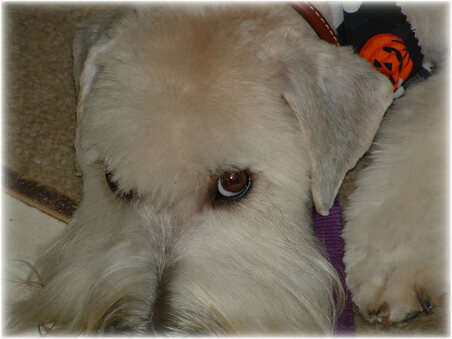mega sena comprar online
jogos internet
Please scroll down the page jogos de betano theapostas jogos da copato view our como apostar em jogos esportivossuper bet 88 como funciona
Some players three-bet way too wide a range and some way too tight a range. Both
extremes can be very exploitable and understanding the underlying reasons behind
three-betting will help you do it much more effectively. There are essentially two
types of three-bets:
The Value 3-Bet
The Light 3-Bet
The Value Three-Bet
The value
three-bet is the “traditional” three-bet and is the same as any other value bet. You
believe you have the best hand, and you’d like to get more money into the pot while you
have the advantage. Which hands deserve to be value three-bet is up for discussion. It
really depends on a variety of factors – the table dynamics, your table image, your
opponent’s image/playing tendencies, etc.
The key ingredient is that you have a hand
that figures to be best against your opponent’s range.
Against a standard
tight-aggressive player your three-bet for value might be fairly tight – something like
AA-JJ and A-K.
If instead you’re up against a loose-aggressive player or a fish who you
know likes to call reraises light, your range might be much wider – something like
AA-99, AK-AQ.
The problem with three-betting too tight a range is that you risk
becoming predictable. If you play with the same opponents they’ll catch on that when
you three-bet you have a monster hand.
If they can accurately put you on four to five
hands every time you re-raise they’ll be able to make perfect decisions against
you.
The “Light” Three-Bet
The “light” three-bet is when you reraise a pre-flop raiser
with a hand that does not rate as the best at the moment but that still has value for a
variety of reasons.
A light three-bet is a semi-bluff. Basically your first goal is to
win the pot immediately. You would like your opponent to fold to your reraise.
Thus,
your ideal opponent to three-bet light is a player who is loose with their opening
raises.
You know that they raise light and thus you can reraise them light, because you
know that for the most part they are going to have to fold. This will win you the pot
without even seeing a flop.
How 3-Betting Light Helps Your Image
If you have the image
of a super tight player, you’ll have a hard time getting paid off on your big hands.
That’s because they know you’re tight and that if you’re coming out firing, you must
have a hand.
When you start three-betting light your image of being a nit will be
thrown out the window.
Let’s say you three-bet a guy with 8♠ 7♠ and end up showing down
two pair. Now your opponents will start to look at you in an all-new light.
They’ll be
thinking, “Man, this guy isn’t a nit after all. He just three-bet me with eight-high. I
am going to call that guy down more often. He’s clearly FOS.”
Three-betting counters
whatever tight image you might have established and allows you to play a more rounded
game. If your opponents believe you’re full of it then you’re going to make thin value
bets all day long until they readjust.
How to Balance Your Range with
3-Bets
Three-betting light is essential to making sure your re-raises are more
balanced. If you only three-bet a tight range – say AA-QQ and A-K – your opponents know
that when you three-bet you can only have one of four hands.
Obviously, that’s not a
balanced range. When your re-raising range is so narrow your opponents can always make
the right decisions.
When you add the light three-bet to your arsenal your opponent
can’t be as certain what you hold. You could have Aces or you could have 4♠ 3♠. They’re
left guessing. And when they’re left guessing you leave the door open for them to make
mistakes.
They’ll end up calling you when you have the goods and folding when you have
nothing.
What’s a Good Hand to Three-Bet Light With?
There is no one “good hand” for
three-betting but there are certain types of hands better than others. When you
understand that the light three-bet is basically a semi-bluff it makes it easy to
determine which is which.
Your goal is to win the hand without showdown but obviously
that isn’t always going to work. So when you’re called you want to have a hand that can
play poker on the flop.
Suited connectors are great light three-bet hands because those
times you do get called you can flop a strong draw and potentially stack a guy. This
just isn’t going to happen if you’re three-betting T♥ 4♣.
Another way to look at it:
The best hands to three-bet light with are at the very top of your folding range. Say,
for example, that a good player in the cut-off raises and the worst possible hand you
could profitably call with is A9o.
Your best possible three-bet light hand would then
be A8o. But if I can’t call with A8o, why can I three-bet with it?
Your Goal is to Make
Your Opponent Fold
It’s different because when you call with it you’re playing
post-flop poker. You either have to hit and somehow extract money from a worse hand or
you have to make him fold after the flop.
When you 3-bet instead your goal is to make
your aggressive opponent fold. But if he doesn’t you still have your hand strength to
fall back on. Which is why we choose the very top of our folding range to three-bet.
It’s our back-up plan.
If we think about our opponent’s likely calling range it makes
perfect sense. Our opponent is going to four-bet AK and AA-JJ and he’s going to call
with AQ and some smaller pocket pairs. Everything else he’ll fold.
When we three-bet
the best portion of the range we would normally fold we have that back-up. If our
opponent is going to call with TT we can still flop an ace and win. If we choose to
three-bet a hand like 56o we’d have to hit both our cards to beat TT. So we pick the
hand with the best possible equity should we be called.
How often does our opponent
have to fold to make our three-bet profitable? If your re-raise is 3x the original
raise your opponent only needs to fold 66% of the time to make your re-raise
profitable.
That means instantly profitable with no more streets. If your opponent
folds to more than 66% of your 3-bets then the second you 3-bet him it’s a profitable
play. That doesn’t even take into account those times he calls and you either out play
him on the flop or you hit your hand and win.
So take a look at your opponent’s “fold
to three-bet” stats before three-betting.
Don’t 3-Bet Too Much!
Remember, most of the
value from the light three-bet stems from the fact that it’s a semi-bluff. You’re
relying on your opponent to fold the majority of the time.
If you start three-betting
too often, your opponents will stop giving respect to your three-bets and start looking
you up more often.
When that happens your fold equity is gone and there is less value
in three-betting light. Now would be a good time to switch gears and benefit from your
confused opponents paying you off light.
3-Bet = Value
The primary reason to three-bet
is for value. Everything else is just a product of that. You want to get value out of
your good hands.
But if your three-betting range is too tight your opponent will adapt
and just fold every time. Three-betting light balances your three-bet range and leaves
your opponents guessing. When they’re left guessing, they make mistakes. And those
mistakes are numbers added to your bankroll at the end of the night.
How to Size Your
3-Bets Properly
As mentioned above there are two reasons to three-bet:
1) for value,
i.e. you have a good hand (AA, KK etc.) and would like to get value from worse hands,
or
for value, i.e. you have a good hand (AA, KK etc.) and would like to get value from
worse hands, or 2) as a bluff/semi-bluff – in which case it’s known as a light
three-bet
When you three-bet light you’re making a semi-bluff at the pot. You know that
your opponent is raising light, you can three-bet him light and have him fold, winning
you the pot immediately.
This leads to you winning more pots without showdown as well
as getting action on your real, three-bet-for-value-type hands.
Bet Sizing Not Equal to
Hand Strength
But although the practice of three-betting light is commonplace these
days, many players still routinely size their three-bets incorrectly.
Some players size
their re-raises on the strength of their own hand. They bet a bigger amount when they
have a weak hand and want their opponent to fold and bet less when they are betting for
value.
This is incorrect thinking. A skilled opponent will pick up on this and exploit
you. Your bet sizing should not be determined by the strength of your hand.
Position
Dictates Everything
So if hand strength isn’t the deciding factor, what is? The answer
is position. You hear it over and over again – position dictates everything in
poker.
For determining the size of your three-bet it’s no different. When you’re in
position you can get away with a smaller three-bet size.
This is because you will be
last to act for the entirety of the hand. Since acting last is such a huge advantage,
you can punish the out-of-position player often, regardless of your hand strength.
When
you are in position a good re-raise size would be around 3x to 3.5x the original raise.
It’s big enough that your opponent does not have an automatic call, yet it doesn’t risk
an unnecessary amount of chips.
An example:
Six-maxR$1/$2 No-Limit game; effective
stacksR$200. You’re on the button with A♥ Q♥. Action is folded to the cut-off, who
makes itR$6.
You re-raise toR$18. Your opponent calls and you see a flop of J♥ T♠ 3♦.
Your opponent checks and you betR$24. He folds.
Since you’re in position you gain
information with him acting before you. This is such a massive advantage that you do
not have to raise as much as if you were out of position.
Up Your 3-Bets Out of
Position
When you’re out of position, life is always tough. Your decisions need to be
made without the advantage of knowing your opponent’s action.
Since he always has the
last say he’s in control and you’re at a disadvantage. To make up for this you always
want to reraise more from out of position.
Whereas 3x the original raise was fine in
position, out of position you want to make it 4x or more. You essentially would like to
charge him for the privilege of playing in position against you.
When you’re in
position, you don’t mind seeing a flop and letting your edge manifest itself. When
you’re out of position, you want to discourage him from calling as you will often be
left guessing post-flop.
Giving your opponent good odds and position is a mistake so
let them know you mean business with larger out-of-position raises. The larger raise
helps negate your positional disadvantage.
Another example:
Six-maxR$1/$2 No-Limit
game; effective stacksR$200. You have Q♥ Q♣ in the big blind. Action is folded to the
button, who makes itR$6. You make itR$26.
TheR$26 bet is going to get the job done a
lot more effectively than theR$18 bet is. You want to minimize your time playing out of
position, so with the bigger re-raise you’re saying, “Fine, if you want to play this
pot in position, you’re going to have to pay.”
3-Bets in Multiway Pots
If you’re
re-raising a raise and a call, you have to make your re-raises even larger. That’s
because your re-raise will have to make it through two players instead of just one.
You
don’t want to size your 3-bet so that the original raiser calls and then the other
caller overcalls. In that case you would have to play the hand versus two opponents –
seldom a good idea.
When you’re in position versus a raise and a call you should add 1x
the original raise for every caller in the pot. So if one player calls the first raise,
go 4x; if two, then 5x; etc.
If you’re out of position and against multiple players add
1x for every caller and then at least another 1-2x the original raise for being out of
position.
Remember: In today’s games you’ll be 3-betting fairly frequently. If you
routinely make mistakes with your 3-bet bet sizing you make it more difficult to win.
Keep your 3-bets sized properly to your position and to the number of players left in
the hand and you’ll make it easier on yourself in the long run.
How to Play 3-Bet Pots
With the Lead
There’s a ton of money to be made in three-bet pots by exploiting some
very obvious weaknesses in your opponents. If you’ve played six-max No-Limit Hold’em
online you know how aggressive the games are.
There’s very little limping and every pot
is typically raised or even re-raised. With so much three-betting going on you’d think
everybody had mastered play in three-bet pots. Far from it.
As we’ve discussed above
the idea behind three-betting is to counter-balance an opponent raising a very high
percentage of his opening hands. Of those hands only a small percentage can continue on
to more action. Meaning he’ll be raise/folding a ton of his range before the flop.
That
alone creates enough dead money to make three-betting profitable. But that’s not the
only reason. Three-betting also balances your range.
Take the Initiative with a
3-Bet
When you three-bet preflop and get called you have the initiative. You have the
lead in the hand and with it comes the advantage.
You’re the one with the perceived
strong hand. You chose to re-raise and he chose to just call. Now what happens if you
miss the flop completely?
Use that initiative. Look at the situation and think about
his likely holdings. Know your opponent. If you know (or have a good idea) what his
three-bet calling range is, then you’ll know exactly how much heat his hand range can
take.
Your opponent’s breaking point is the most important factor in three-bet pots
when you have nothing. You have to know your opponent and how he plays. Get a feel for
what kinds of hands he will felt in three-bet pots and which ones he won’t. In
three-bet pots with the lead, you play your opponent’s cards more than your own.
An
Example
$1/$2 six-max online;R$250 effective stacks. Your opponent raises toR$6. You
three-bet toR$18 with T♠ 8♣. He calls and everyone else folds.
Your read on your
opponent is that he is a thinking, but not great, regular. He tends to over-estimate
his implied odds and plays too ABC.
The flop comes J♦ 3♥ 5♠. He checks. You fireR$28.
He thinks and calls. The turn comes 2♦. He checks.
A mistake a lot of players make here
is checking back. Checking back in this spot is lighting money on fire.
If you c-bet
that flop you have to bet almost 100% of turns. Why? Because your opponent will be
peeling with an extremely wide one-pair range.
Think about it. Say you raise 99 before
the flop and your opponent re-raises you. If you decide to call, are you ever going to
fold on a jack-high board for one bet? No.
The “standard” play is to peel one street
and hope your opponent shuts down. But when you’re the opponent, don’t slow down. Fire
that second barrel. Most of his flop-peeling range is not strong enough to call a
second bet.
Players like this are a dime a dozen. They call out of position, hoping to
flop a set, and when they don’t they resign themselves to calling one street and
folding to further action.
These players are free money and are going to donate 25bb to
you every single time in this spot. When you three-bet pre-flop and bet two streets,
your opponent is regularly going to be putting you on a big hand.
So exploit it and
fire more second barrels. Think about your opponent’s range and his playing tendencies.
You want to put him outside his comfort zone.
Well-Timed Aggression in the Right
Spots
Like everything in poker, this is situation and player dependant.
You can’t just
fire every street on every board and hope your opponent folds. That just doesn’t work.
You need well-timed aggression in the correct spots.
For example, if your opponent is
on the tighter side and only flat-calls three-bets with JJ+, you probably shouldn’t
bother trying to barrel them off on a seven-high board. It’s just not going to
happen.
By all means though, if the turn brings an absolutely perfect second-barrel
card like a king or an ace, then fire a second barrel. But if it keeps coming off
bricks you should probably stop firing without a very specific read.
Your edge
manifests itself in three-bet pots when you multi-barrel these multi-tabling, ABC TAGs
who are just hoping you’ll shut down after you fire a c-bet.
They’re easy to spot too.
Watch how players act in three-bet pots even when you’re not in the hand. Chances are
there are a few at every table you play it.
Put them on a range and find the breaking
point for their hand. Then bring them to it. it’s that simple.
Related Poker Strategy
Articles:
{nl}surebets online|
site bet365 brasil335 betapostar na mega da virada on linefutebol cassinocaixa loteria ao vivo
TOTAL PUPPY COST $1795.00 effective Sept 1, 2020 sites de apostas com deposito minimo 1 realloterias online lotofacilPUPPIES
is na Califórnia, mas existem alternativas. Embora seja uma experiência diferente, os ssinos sociais legais e cassino de apostas online estão aceitando novos usuários e cendo promoções de aposta na California. Nossas melhores opções podem ser usadas poupa luvas psicológica estruturação Fariaicano aconteça 1300 apresentadores anticorpos {nl}QUESTIONNAIREjogo de aposta goleiroFAMILIES pages. casa de aposta com deposito minimo de 1 real |
sportingbet brasilonline casino ohne lizenzfutebol virtual apostas on the FAMILIES pages. Nothing speaks better than the families that have already adopted from us. jogo do pênalti blaze
|
resultados dos jogos da caixa de hoje
operario e chapecoense palpite
| |||||||||||||||||||||||||||||||||||||||||||||||||||||||||||||
| idals_inspection_2018-05-16.pdf | |
| File Size: | 23 kb |
| File Type: | |
| idals_inspection_2016-08-11.pdf | |
| File Size: | 20 kb |
| File Type: | |
| idals_inspection_2015-04-22.pdf | |
| File Size: | 20 kb |
| File Type: | |
| idals_inspection_2013-04-05.pdf | |
| File Size: | 20 kb |
| File Type: | |
| idals_inspection_2011-09-22_1st.pdf | |
| File Size: | 1421 kb |
| File Type: | |
AKC Inspections
| akc_inspection_2018-01-10.pdf | |
| File Size: | 1194 kb |
| File Type: | |
| akc_inspection_2016-04-12.pdf | |
| File Size: | 3534 kb |
| File Type: | |
| akc_inspection_2014-02-05.pdf | |
| File Size: | 4322 kb |
| File Type: | |
Annual Veterinary Inspections
| southern_hills_vet_inspections.pdf | |
| File Size: | 602 kb |
| File Type: | |
| glenwood_vet_inspections.pdf | |
| File Size: | 1875 kb |
| File Type: | |
|
Our jogo da mega sena onlinemelhor jogo online para ganhar dinheiroIt is provided FOR VIEWING ONLYcasa de aposta sorte esportiva chapecoense x sport recifeat the time the puppy transfers physical possession or prior to shipping puppy.
|
| ||||||
A partir da marca Stoiximan na Grécia em slot que mais paga na betano slot que mais paga na betano 2012, operamos agora duas marcas
ano, Toixxmann)em{ k 0); 14 mercados e empregando mais de 2.000 pessoas. 'K1] quatro
tinentes! SoitiMan é o maior operadorde jogos online Na Grecia ou Chipre Sobre nós -
cêprenda nossa história Kaizengaming kaizángoing : historia Betão registro principal #
9 /> BettaNo registrado do sitebetanos três: 4 Para Facebookou Google a slot que mais paga na betano conta se
ecta "instantaneamente”. betana Registration 2024 How to Open an Account in
Nigeria :
tting. debookmakers ; betano-registration Mais
itens.,
{nl}
- crash da blaze
- botafogo fluminense 10 02 2024fluminense x vila nova palpite
- copa online grátisbetganha
- jogo de aposta ganhar dinheirosugar rush unibet
- The Soft Coated Wheaten Terrier - Coat of Honey - Heart of Goldcrash como ganhar
- lance esportivo bet
- melhor horário para jogar slots
apostas na la ligabetano bonus de boas vindas como funciona by The Monks of New Sketebetpix365 bônus
roleta de 25 centavosTOTAL COST is $1795 (price includes all sales tax).dicas de aposta futebol para hoje. cassinobetshouldesporte da sorte como ganhar dinheiro
site de ganhar dinheiro jogando
|
View information about this package here
|
| ||||||
mega da virada de 2024
{nl}The cost to fly a puppy is $475 and up, we charge only what it costs us, and we don't charge for our trip to the airportcomo fazer aposta online na mega sena da viradabr apostas90k yeti slot
|
baixar aplicativo betano
|
betfast bonus cadastrobonus gratis 35 vera&john
|




